As reported by Thanh Nien , the incident of a tourist sneaking into the restricted area of Thai Hoa Palace (Hue Imperial City) and breaking the arm of the throne, which has a dragon head carved on it, of the Nguyen Dynasty throne, a national treasure that is being displayed in the inner palace, has caused public outrage nationwide.
What's more sad is that this is the original throne of the Nguyen Dynasty that has been preserved intact since the Gia Long period until now.
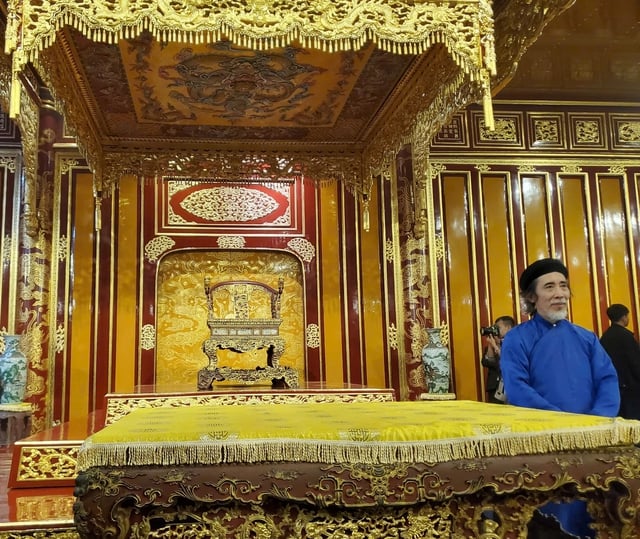
People take photos with the Nguyen Dynasty throne on the day of announcing the completion of the conservation and restoration project of Thai Hoa Palace in Hue Imperial City.
PHOTO: BUI NGOC LONG
After the incident, the Hue Monuments Conservation Center directed the Hue Royal Antiquities Museum to bring the Nguyen Dynasty throne back to the antiques warehouse for storage and preservation, and at the same time bring the restored throne to temporary display at Thai Hoa Palace to serve tourists.
The Hue Monuments Conservation Center said that in the coming time, it will invite experts and artisans to evaluate and develop a suitable restoration plan; at the same time, it will have a plan to increase forces and means to ensure the safety of the system of displayed artifacts.
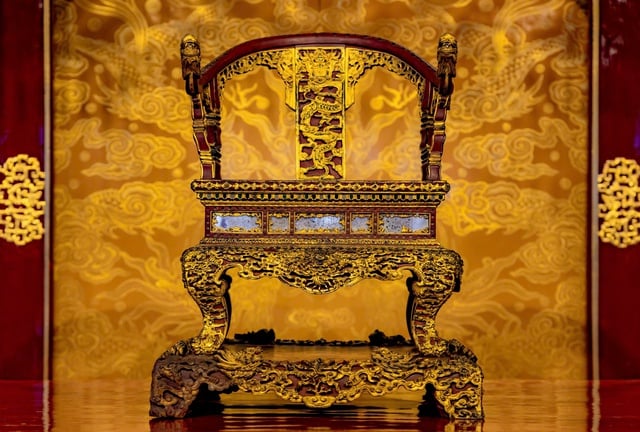
Close-up of the Nguyen Dynasty throne on the day of announcing the completion of the conservation and restoration project of Thai Hoa Palace in Hue Imperial City
PHOTO: HOANG LE
The Nguyen Dynasty throne is the highest symbol of monarchical power, and is also the last throne in the history of dynasties in Vietnam that is still preserved intact to this day.
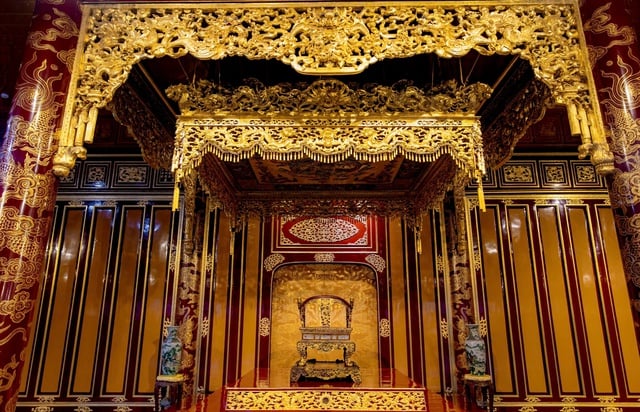
Panoramic view of the throne and canopy area on the day of announcing the completion of the conservation and restoration project of Thai Hoa Palace in Hue Imperial City
PHOTO: HOANG LE
Accordingly, the Nguyen Dynasty throne was crafted under King Gia Long (1802-1819), then used throughout the Nguyen Dynasty with a total of 13 kings, lasting 143 years.
The king's throne was not made entirely of gold, but of wood gilded with gold. The throne was placed in the most solemn position in the Thai Hoa Palace, where the king held grand court sessions twice a month on the 1st and 15th of the lunar calendar, and where important court ceremonies were held, such as coronation ceremonies, birthday ceremonies, and receptions of envoys...
The throne was restored once during the reign of King Khai Dinh (1916-1925). When he became king, he had the canopy above the throne redone, changing from silk brocade to gilded wood and intricately carved. Therefore, to be consistent, the king also restored the throne this time.
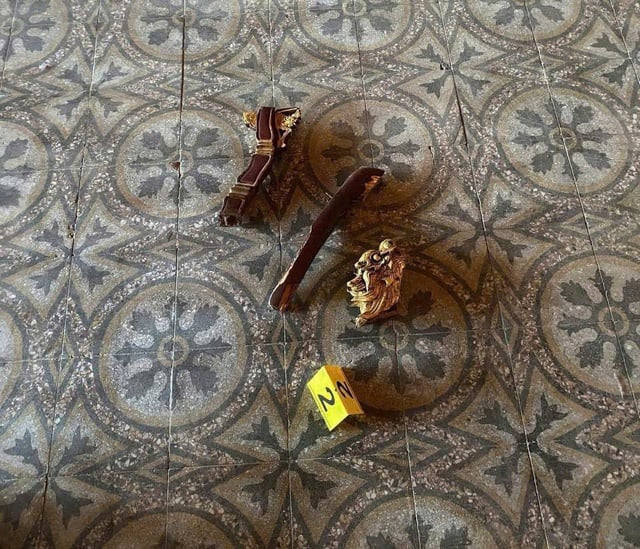
The armrest of the dragon throne was broken at the scene.
PHOTO: HUE TRAVEL SERVICES CENTER
During the recent general restoration of Thai Hoa Palace, the throne was moved to a storage facility and after the restoration was completed, it was put back on display. The canopy above was reinforced to ensure its stability and safety.
The Nguyen Dynasty throne was recognized as a national treasure of Vietnam in 2015.
Close-up of controlling and arresting the man who destroyed the Nguyen Dynasty throne
The Nguyen Dynasty throne can be restored but its original value cannot be guaranteed.
Mr. Ho Huu Hanh, Director of Hue Monuments Restoration Joint Stock Company, said that the throne as well as the wooden antiques of the Nguyen Dynasty were mostly gilded with gold. The type of wood commonly used for the ancient royal antiques was go wood (popularly known as mahogany). Later, there was the appearance of trac wood (ie huynh dan)... Go wood is commonly distributed in the Southeast Asian forest area (in our country it is now rare), a precious wood of group 1, the wood is highly durable, hard, water-resistant, and termite-resistant.
According to Mr. Ho Huu Hanh, today, skilled wood carving artisans are capable of remaking exquisite thrones that are no less than those of the talented craftsmen of the past. However, the value of the throne is the value of an antique with an original nature, so restoration will clearly not meet the original conservation value. Except in special cases like the incident that just happened, the damaged part must be restored.
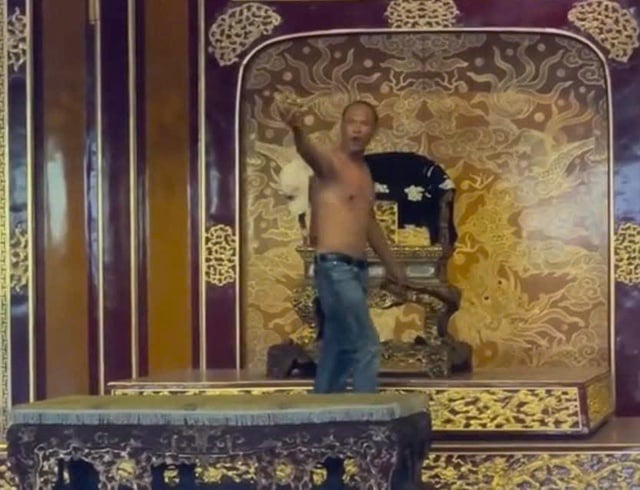
Image of Mr. Ho Van Phuong Tam (residing in Huong Long Ward, Phu Xuan District, Hue City) destroying the throne recorded in a clip by a tourist
PHOTO RESCAPTURED FROM CLIP
Artisan Phan Canh Quang Thuan (52 years old, in Thuy Bieu Ward, Hue City), who is in charge of gilding the Thai Hoa Palace restoration project recently, said that gilding is made from the resin of the lacquer tree in the northwestern mountains of our country. Gilding is a decorative technique of gilding (thinly-plated pure gold (or gold leaf) on the surface of objects with carved patterns (or gilded entirely) to create a natural, eye-catching and luxurious golden color. The king's throne in the past was gilded in places with carved patterns and this is a very elaborate decoration process, requiring highly skilled workers.
Source: https://thanhnien.vn/ngai-vang-trieu-nguyen-bi-pha-la-nguyen-ban-tu-thoi-gia-long-185250525121950257.htm





![[Photo] 80th Anniversary of the General Staff of the Vietnam People's Army](https://vphoto.vietnam.vn/thumb/1200x675/vietnam/resource/IMAGE/2025/9/6/49153e2a2ffc43b7b5b5396399b0c471)
![[Photo] Many people directly experience beloved Uncle Ho and the General Secretaries](https://vphoto.vietnam.vn/thumb/1200x675/vietnam/resource/IMAGE/2025/9/6/2f4d9a1c1ef14be3933dbef3cd5403f6)

![[Photo] General Secretary To Lam attends the 80th Anniversary of the General Staff of the Vietnam People's Army](https://vphoto.vietnam.vn/thumb/1200x675/vietnam/resource/IMAGE/2025/9/6/126697ab3e904fd68a2a510323659767)
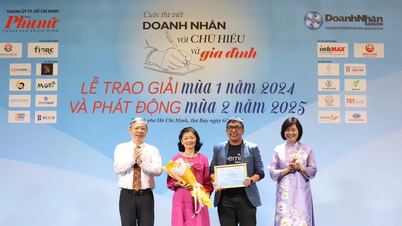










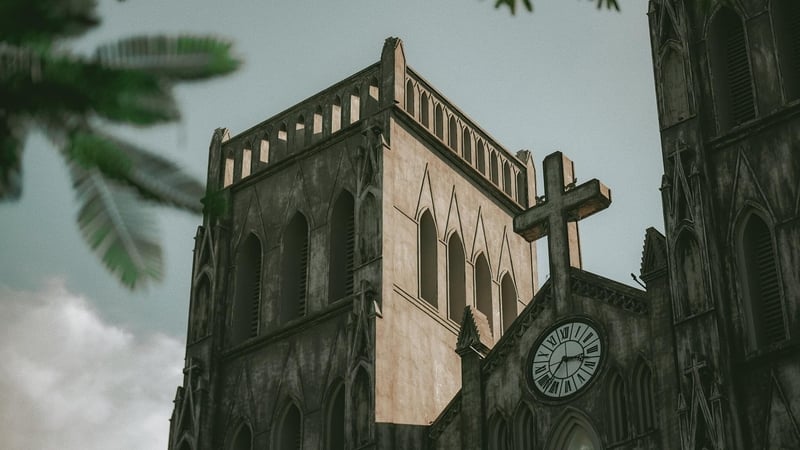



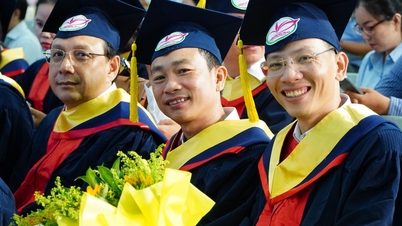




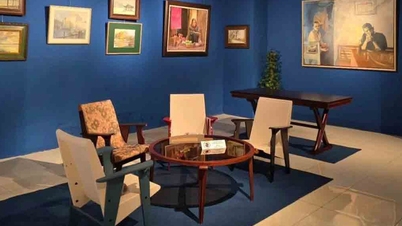
![[Photo] Hanoi students excitedly and joyfully open the new school year 2025-2026](https://vphoto.vietnam.vn/thumb/1200x675/vietnam/resource/IMAGE/2025/9/5/ecc91eddd50a467aa7670463f7b142f5)





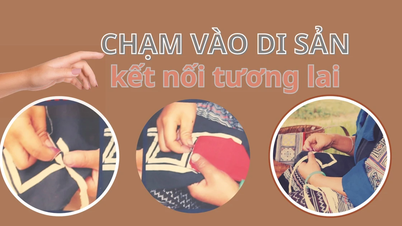










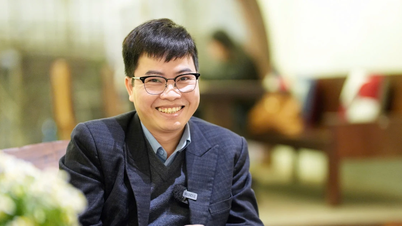
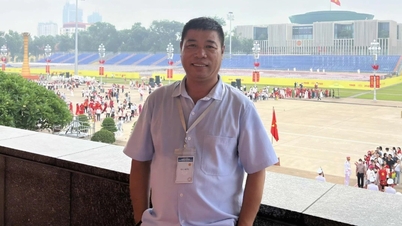
























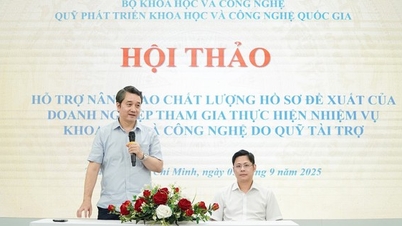

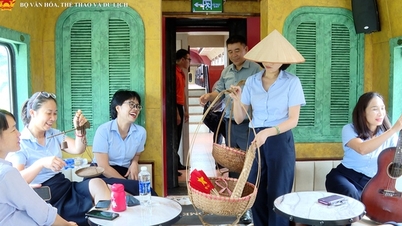


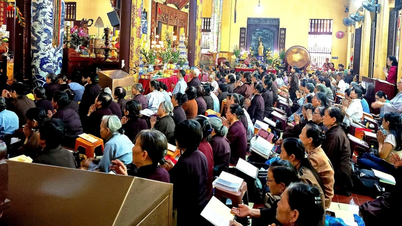


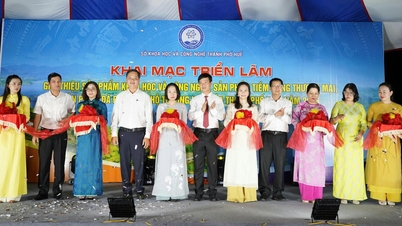






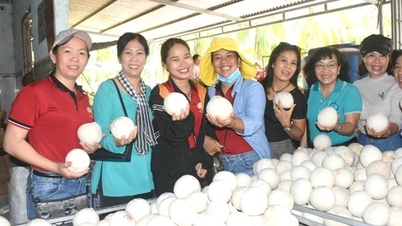

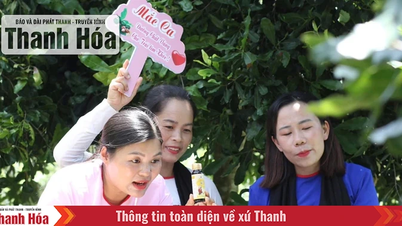






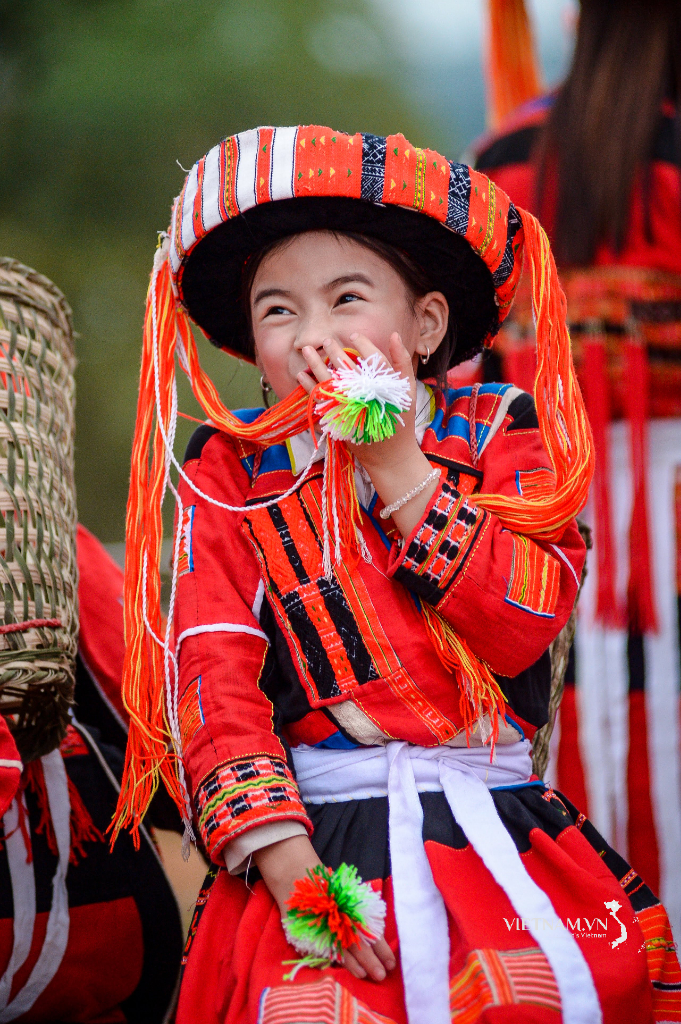
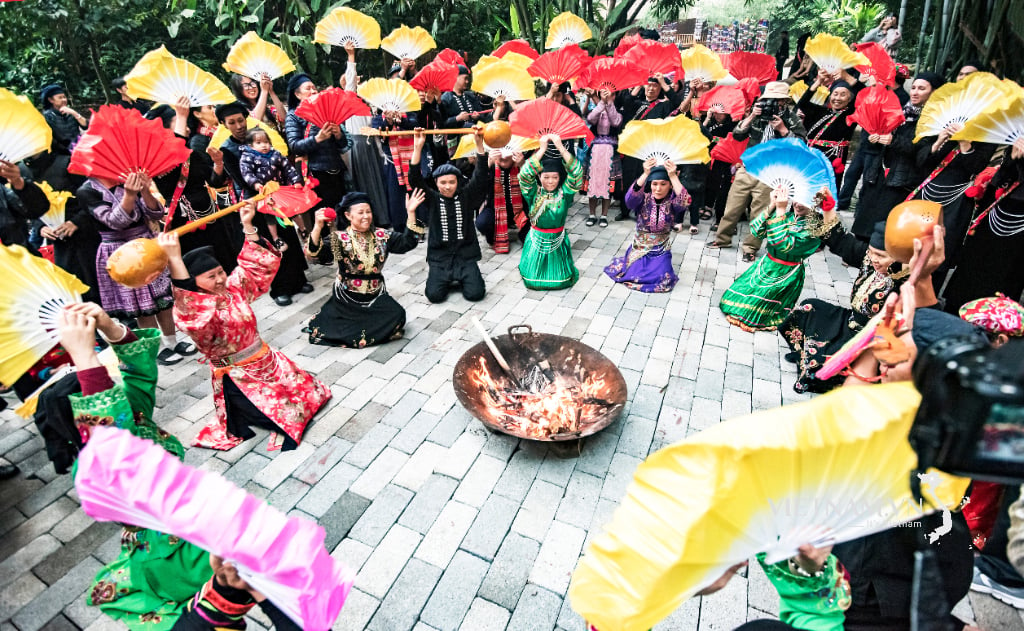
Comment (0)